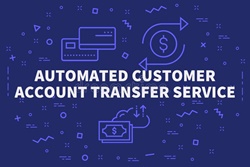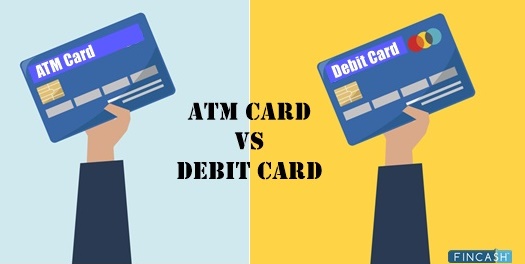
Table of Contents
Automated Teller Machine (ATM)
Automated Teller Machines, popular as ATMs, are the most valuable and necessary banking field advancements. An ATM enables people to make various banking transactions and check the banking and account details without taking help from an actual teller.

Additionally, with an ATM, customers can also access various banking services without visiting the Bank branch. Most of the transactions in an ATM are done using cards, but a few can also be done without them, like withdrawing money from ATMs using net banking instead of using cards as introduced by SBI, ICICI Bank, and others.
Advancement in the banking sector made the financial lives much easier for everyone. With the help of ATMs, customers are no longer required to visit the bank branch for every minor purpose and take simple banking actions like cash withdrawal, balance inquiry, etc. Furthermore, automated teller machines are widely found in every corner of the world.
What is an ATM Card?
A bank card used to access an ATM is known as an ATM card. Almost everyone with a Savings Account has a card that can be used at an ATM, whether a debit or credit card. The working of an ATM is simple and easy. To activate the ATMs, you must enter plastic ATM cards into them. Some machines demand you to insert your cards and leave them till the transaction is completed, while others involve card swapping.
The magnetic stripe on these ATM cards contains your account and security information. When you insert or swap your card, the computer collects account information and demands your PIN. Machines allow cash transactions once the authentication is validated.
Types of Automated Teller Machines
There are two main types of automated teller machines. The primary unit machine is the one that allows customers only to withdraw cash and receive the updated account details for their bank accounts.
In contrast, the complex ATMs also accept deposits from customers and allow line-of-credit payments and transfers. Customers can also retrieve the updated account details using complex ATMs. For the bank customer to use the complex machines and the advanced features offered by them, they must have a bank account with the bank that operates the machine.
Analysts also believe that the ATMs will increase in popularity, and there will also be a rapid increase in the number of ATM setups and withdrawals using these machines. Furthermore, in the future, ATMs might also have full-service terminals and traditional bank tellers.
Talk to our investment specialist
Functions of ATM
Other banking and financial transactions are assisted by the Automated Teller Machine, which is included below:
- The most typical function of contemporary ATMs is money withdrawal
- While not all ATMs can do this function, some ATMs allow and accepts cash deposits from customers
- Inquiring about your account balance is one of the ATM's functionalities
- You can send or transfer money from one account to another without having to stand in line
- Making payments for purchases is a common ATM service
Features of an Automated Teller Machine
Even though there is a difference in the ATM of each bank, there are certain essential parts that are common in all of them. The input and output tools of ATMs are as follow:
Input Devices
Keypad
Every ATM has a keypad where you can enter numbers, clear them, or cancel transactions. You can use it to input your PIN and the amount you want to withdraw. These keypads are either actual ATM buttons or virtual keypads on the touchscreen.
Card Reader
Each ATM contains a slot for inserting a debit or ATM card. The card typically features a magnetic strip on the back and, in some situations, a chip on the front that stores the account information. The card reader recognises these details and sends them to the user server.
Output Devices
Speaker
Most ATMs have a speaker that provides voice instructions for accessing the machine and performing transactions. As a result, it allows users to complete the transaction more smoothly.
Cash Dispenser
Bank officials, carefully load cash into the ATMs. After entering a specified amount, you can collect cash from a cash dispenser.
Display Screen
It displays information about the transaction. It lists the steps of cash withdrawal in chronological sequence. The display is either a Cathode Ray Tube (CRT) or Liquid Crystal Display (LCD).
Receipt Printer
A Receipt shows the details of the transactions that were printed on it. It tells you the transaction's time and date, the remaining balance in the account and withdrawal amount, etc.
Advantages of ATM
The following are some of the benefits of ATMs:
Rupee withdrawals are quicker than bank withdrawals, with no need to queue
With fewer human mistakes, quick and timely service is achievable
Without the aid of a bank, withdraw cash at any time or in an emergency
ATMs make cash withdrawal easier for customers while travelling
It delivers services 24 hours a day, seven days a week, without the need for additional personnel, reducing the workload on bank employees
It also gives you a receipt with information about your money withdrawal and account balance
Customers are guaranteed privacy
As there is no personnel engaged in the transaction, maintenance costs are lower
History of ATMs in India
In 1987, Hong Kong and Shanghai Bank Corporation (HSBC) was the first bank in India to offer ATM technology. In Mumbai's Andheri East, the first ATM was installed. Now, the majority of banks have their ATMs in India. In 1967, in a Barclays Bank branch in London, inventor John Shepherd-Barron constructed the world's first automatic cash dispenser. Since then, year-on-year the networks of ATM grew across the country. As of April 2017, the NFS Network connects total of 2,36,199 ATMs in India.
The Bottom Line
ATMs are offered to make banking customers' life simpler financially. They save customers time by allowing them to do financial operations while on the go. It allows people to keep cash in hand in times of emergency.
Thus, ATMs have increased people's accessibility and convenience. ATMs are especially beneficial when you are not near your bank's branch where you have an account or when the bank is closed. Since you are not dependent on them, you can withdraw cash even on bank holidays or after work hours.
All efforts have been made to ensure the information provided here is accurate. However, no guarantees are made regarding correctness of data. Please verify with scheme information document before making any investment.










